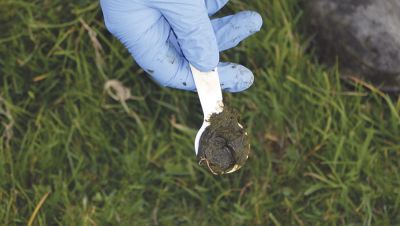
Posted By:
Top tips for worm egg counting
- Understand which group of animals need testing. Most of the time this is calves or lambs.
- Only collect samples from those animals which need testing, otherwise mixed age groups can lead to false results. I.e. missing ewes and lamb samples.
- If you’re unsure what samples to collect, please get in touch and we can direct you.
- Post drench check timings vary depending on wormer. Levamisole is 7 days, typically others are 14 days.
How to take faecal egg count samples correctly for CATTLE
- Use a tablespoon to collect faeces from 3 areas per fresh pat.
- Collect in a glove/zip lock bag/pot, expel the air, seal sample and label with the group.
- Collect 10 individual samples per group.
- Drop off at the surgery for testing the same day or store refrigerated overnight before dropping off.
How to take faecal egg count samples correctly for SHEEP
- Gather the animals to be tested in a corner and leave for 15 minutes.
- Collect a 3g (tablespoon) sample in a glove/zip lock bag/pot, expel the air, seal sample and label with the group.
- Collect 10 individual samples per group.
- Drop off at the surgery for testing the same day or store refrigerated overnight before dropping off.
To encourage you to carry out routine monitoring, we are still offering the ‘Worm Egg Count Club’ this is 10 samples for a discounted rate of £100 ex vat. Please let the office know when you drop off your first sample if you would like to take advantage of this.
- Rosie Lyle
Whilst on my visits I have been having several discussions...
As our feline friends get older there are a few conditions...
Another winter discussion group season is now behind...
©2024 Shepton Veterinary Group Ltd., All rights reserved.
Privacy Policy • Terms & Conditions • Cookie Policy